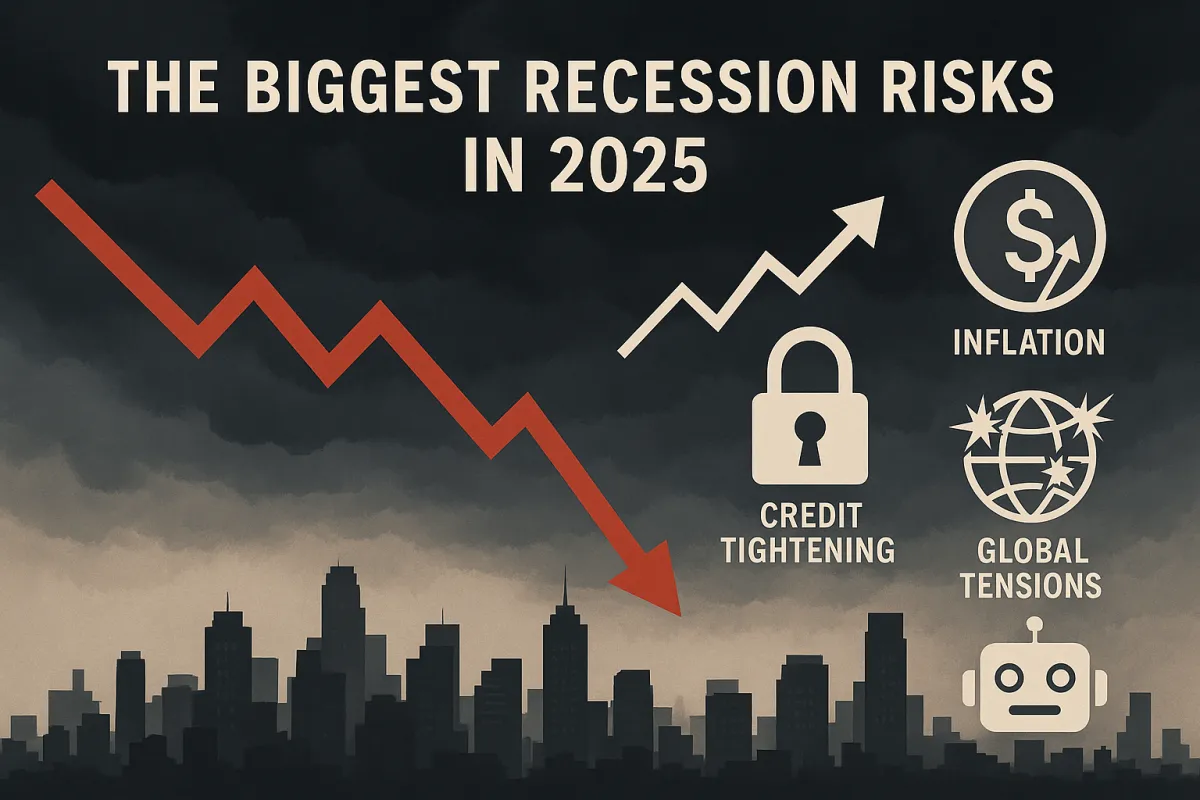
About Us
At Investor’s Journal, we believe retirement shouldn’t be a question mark — it should be your reward.
Our mission is simple but bold: help 100,000 Americans create an abundant and stress-free retirement.
We started Investor’s Journal because too many hardworking people were doing everything right — saving, investing, following advice — and still ending up unsure if they’d ever be able to retire comfortably. The rules kept changing. The markets kept shifting. And traditional advice often felt like it belonged to a different era.
We knew there had to be a better way — one rooted in clarity, confidence, and real-world results.
So we built a platform designed to cut through the noise and deliver the insight, strategies, and tools that real people need to retire with peace of mind. Whether you’re five years out or already making the transition, we’re here to help you protect what you’ve built, grow what you’ve saved, and enjoy the freedom you’ve earned.
Our community includes retirees, pre-retirees, smart savers, and seasoned investors — all united by one goal: financial independence on your terms.
With every article, strategy guide, and personal story we share, we’re working toward that 100,000-strong vision. And we won’t stop until we get there.
Because when you take control of your financial future, retirement stops being something to fear... and starts becoming something to look forward to.
Welcome to Investor’s Journal.
Let’s build the retirement you deserve.
Read Our Newest Blogs

Biggest Recession Risks in 2025: What Investors Need to Know Now
Investors are on edge as 2025 unfolds, facing a global economy teetering on the brink of significant disruption. With echoes of past downturns still resonant, understanding the key recession risks today could mean the difference between safeguarding your portfolio and suffering heavy losses. Here are the most pressing recession risks to watch in 2025 and how they might reshape the financial landscape.
Risk 1: Persistent Inflation and Monetary Tightening
Inflation remains stubbornly high globally, prompting aggressive monetary tightening by central banks. The Federal Reserve, ECB, and other institutions have raised interest rates to their highest levels in decades, choking off liquidity and making debt servicing expensive.
Why It Matters
High interest rates discourage borrowing and investment, potentially triggering a slowdown. This is evident in real estate markets, where mortgage rates have soared, depressing home sales and construction.
Real-World Example
In the U.S., the average 30-year mortgage rate surpassed 7%, significantly dampening home affordability and new housing starts. Similar trends appear across Europe, notably in Germany and the UK, further compounding recession fears.
Risk 2: The Looming Credit Crunch
The tightening of credit markets is another critical threat. Banks have significantly reduced lending amid fears of defaults and economic instability.
The Underlying Problem
Corporate and consumer defaults rise as borrowing costs increase, prompting lenders to become overly cautious. Tight credit conditions throttle economic growth, particularly for small and medium-sized enterprises (SMEs) heavily reliant on financing.
Case Study
Regional banks in the U.S. experienced a wave of loan defaults in sectors like commercial real estate, causing notable bank failures reminiscent of earlier financial crises.
Risk 3: Geopolitical Tensions and Global Trade Disruptions
Heightened geopolitical tensions, particularly involving major economies such as the U.S., China, and Russia, continue to disrupt global trade.
Trade Implications
Sanctions, tariffs, and trade restrictions impact global supply chains, causing prices of commodities and manufactured goods to remain volatile. This uncertainty reduces business investments and consumer spending.
Notable Incident
Trade disruptions from ongoing U.S.-China tech restrictions have significantly impacted semiconductor availability, hitting manufacturing sectors globally and pushing prices higher across tech and automotive industries.
Risk 4: Debt Levels and Sovereign Debt Crises
Global debt levels have reached alarming heights, with sovereign debt becoming increasingly unsustainable for many countries.
Debt Dynamics
Countries face higher debt servicing costs due to elevated interest rates, potentially sparking sovereign debt crises. Emerging markets, with significant portions of their debt denominated in foreign currencies, are especially vulnerable.
Current Scenario
Argentina and Turkey have already faced severe debt-related pressures, prompting interventions by the International Monetary Fund. Economists warn this could spread to larger economies, increasing the risk of widespread economic disruption.
Risk 5: Technological Disruptions and Labor Market Turmoil
Rapid technological advances, especially AI-driven automation, pose significant risks to employment, potentially exacerbating economic inequality and social unrest.
Automation’s Impact
AI technologies increasingly replace human roles across industries, from finance to manufacturing. While productivity gains occur, displaced workers without adequate re-skilling opportunities face long-term unemployment, reducing overall consumer spending power.
Example from the Field
Amazon and Walmart have substantially increased automation in warehousing operations, reducing their workforce. Similar trends in white-collar sectors, such as financial services and software engineering, further emphasize this economic threat.
Risk Management and Future-Proofing Portfolios
Investors must recognize these risks and adapt proactively:
Diversify Investments: Emphasize asset classes like treasury bonds, real estate, and dividend stocks resilient to inflation and credit volatility.
Monitor Monetary Policies: Stay vigilant to central bank actions and adjust strategies accordingly.
Geopolitical Risk Assessment: Integrate geopolitical analyses into investment decisions to anticipate trade-related disruptions.
Conclusion
As economic storm clouds gather, understanding these five recession risks can empower investors to safeguard and strategically position their assets. Navigating 2025's uncertainty requires foresight, flexibility, and careful risk management. The informed investor who acts decisively now can weather the turbulence and emerge with their financial goals intact.

